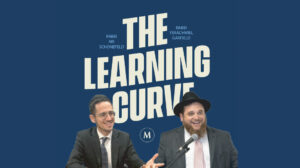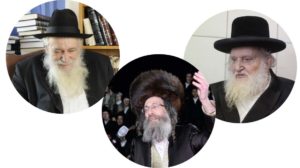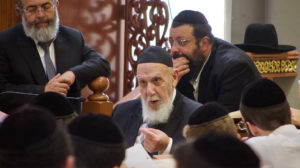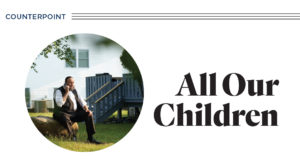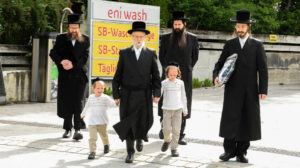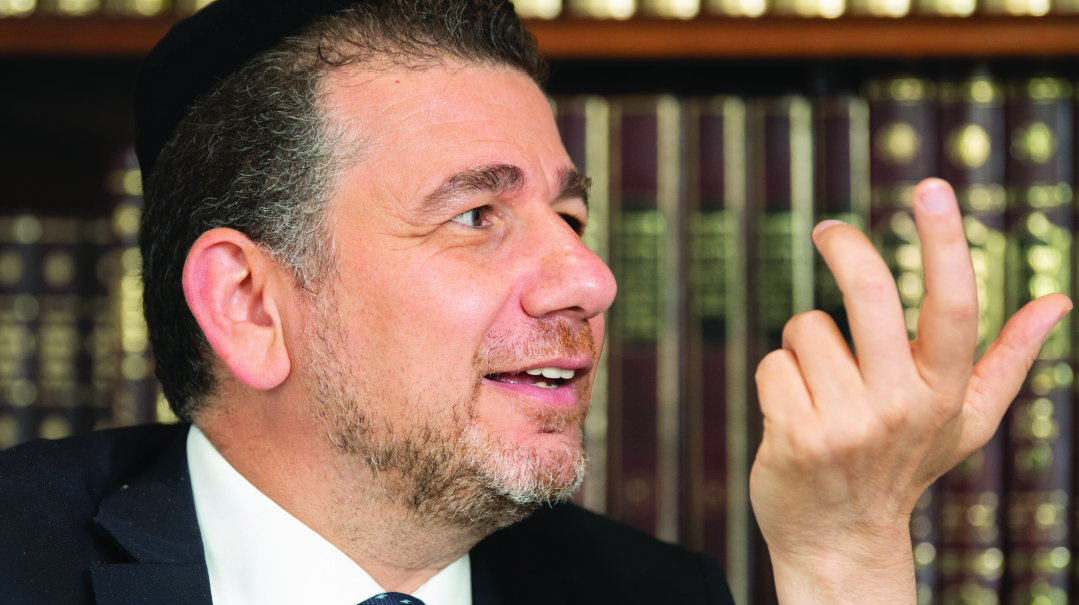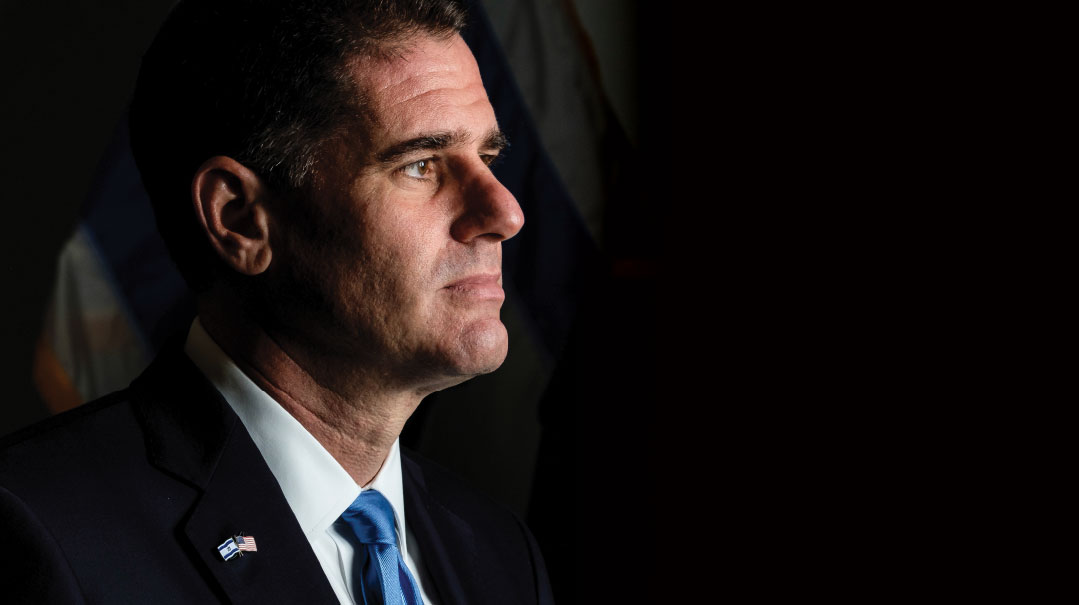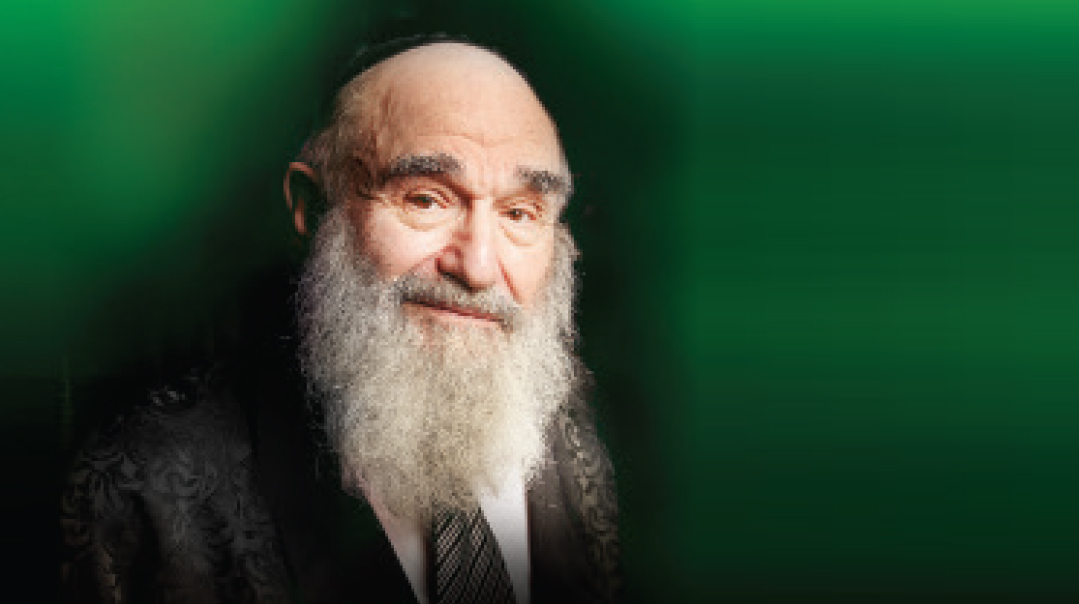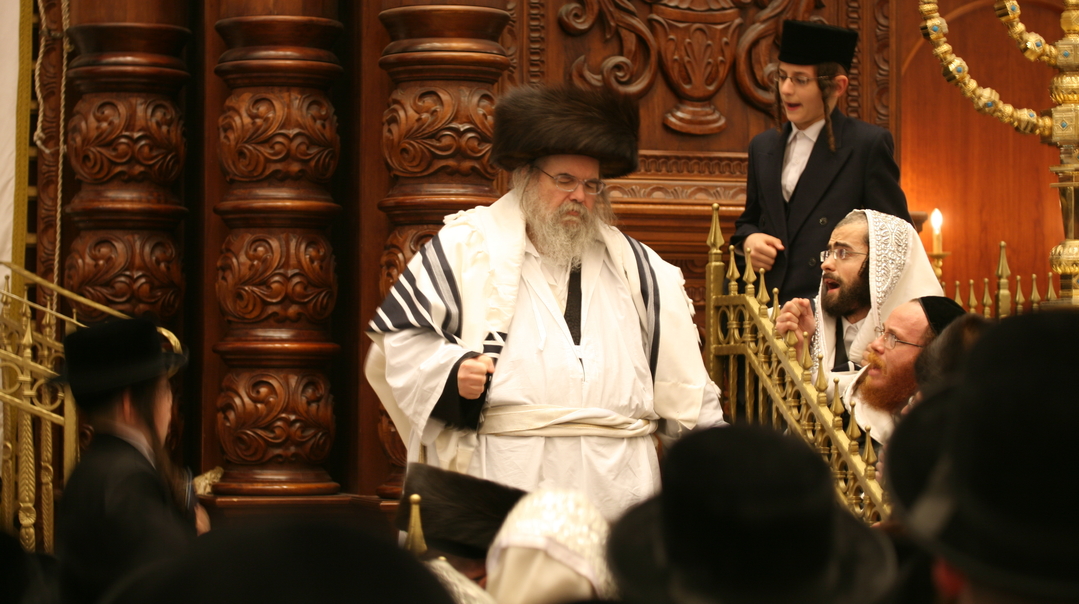Hold On to the Dream

Rav Aaron Lopiansky, author of Orchos Chaim: Ben Torah for Life, says the challenge facing today’s breadwinner is to create realistic goals and craft a new message
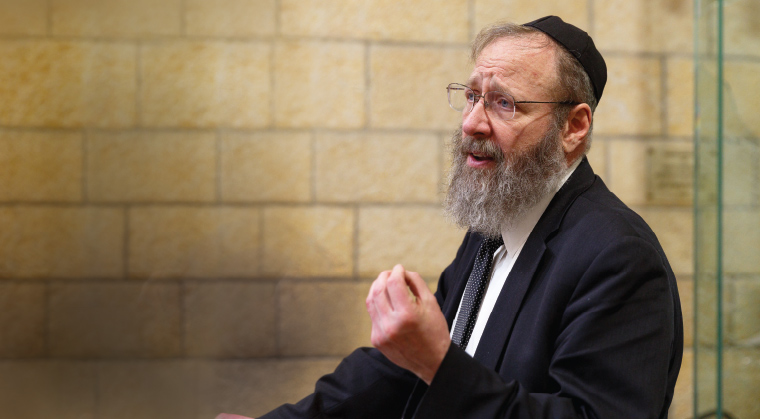
Photos: Elchanan Kotler, Jeff Cohen
The man who wrote what might be the best storybook of the year doesn’t want to be interviewed.
It isn’t about him, he points out, and while he’s right that the thin blue volume with the unexceptional cover and rather generic name isn’t about his life, it is the story of everyone else’s life.
It’s the narrative familiar to a generation of 20-somethings who sit at Shalosh Seudos picking at slices of gefilte fish and wondering who they are, if bein hazmanim is still in effect, and why they are so, so tired.
It’s that awkward moment between “Who are your chavrusas this zeman” and “Actually, I’m working now… yes, commercial mortgages… thank you, I’m still learning the ropes.”
And a blow to the ego is the easiest part of it.
The path that starts with the snip of scissors and a large tallis and honey on holy letters is cushioned, a system of yeshivos feeding other yeshivos, questions that lead to answers.
Until there’s no easy answer.
Suddenly, the comfortably trodden path splits into a crisscross of interlaced roads and passages: a thousand young couples in a hurtling subway train, reaching for a strap that isn’t there.
The familiar system that offered answers about fleishig onions and milchig knives isn’t there, and the gaping empty space allows gray light to filter in, the world appearing like a pencil drawing which has been rained on — lines still visible, but smudged.
Rav Aaron Lopiansky has just finished delivering a shiur in the Passaic kollel, and we’ve made up to meet in the rosh kollel’s basement.
But there’s a picture on the wall, and it has pulled Rav Aaron in, so I wait. It’s a charming depiction of a Meah Shearim bookseller hunched over the long counter of a high-shelved store, a wall of colorful seforim rising behind him.
The rosh yeshivah of Yeshiva of Greater Washington is standing and studying the image.
I ask him if it takes him back to that world — the alleys of Meah Shearim where his in-laws, Rav Beinish and Rebbetzin Esther Yenta Finkel, lived; the island of the Mirrer Yeshivah; the rooms of the Meah Shearim shtiblach where gravelly voiced men never finish davening, arguing, smoking — and if that’s what’s drawing him so.
As with every other question I will ask, he thinks for a while before answering. “It has a magic. But so does Silver Spring, or every place, really. My rebbi, Rav Moshe Shapira, would meet a person, or visit a new place, and get completely engaged. I’m a naturally curious person, but he was the one who could really tap the essence of a person or place as soon as he saw it.”
Perhaps without realizing it, the Rosh Yeshivah has answered my primary question. I had been wondering why he chose to write a book about the challenges and process of shifting from yeshivah to the workplace: With such a rich, broad inner world of Torah, why make this your magnum opus?
But he’s answered it. A man who can look at a picture and be back in Meah Shearim perceives how opening a Mishnayos during lunch in a law firm can put you back in kollel.
And I realize that so many conversations of the last decade — discussions about marriage, about parnassah, about growth — were, like Caesar Nero’s arrows all falling in the same place, really all pointing to this one.
At a question-and-answer session at this year’s Agudah convention, Rav Elya Brudny took the mic to uncharacteristically push a particular book, encouraging “every family that has made that transition [from kollel to the workplace] to own the book.”
Rav Yosef Elefant spoke next. “In the modern era, there hasn’t been a sefer that touched on the topics critical to our existence, with honesty and clarity and respect, like this one has.”
Such acclaim, even as the book itself — Orchos Chaim: A Ben Torah for Life — arrived on the scene with little drama, no rollout or book launch, reflecting the unpretentiousness of its author, who shrugs when I mention the feedback.
“Look, it’s the topic,” says Rav Lopiansky. “Within that wider challenge is the essential challenge of being a human being in Olam Hazeh. A few years ago, we dealt with it in an online journal called Klal Perspectives and I saw the confusion. So I started to formulate the book.”
In the shadows of the pages, there is a figure — it has no name, and no details are offered, but in every paragraph, you can see that the author has a particular balabos in mind, a role model upon whom he’s basing himself.
When Rav Aaron spoke before Ne’ilah in his yeshivah a few years ago, he said, “Perhaps I know how to learn better than my father did, but the way he held his tallis and tefillin under his arm? That I can never match.”
Reb Benzion Lopiansky learned in Slabodka, and after leaving the renowned yeshivah, he went to work.
“My father came to America at a time when rabbanus was at an all-time low, in terms of prestige and influence. He would quip, ‘Rabbanus is no job for a ben Torah,’ and he was hopeful, even as I grew in learning, that I would find a way to make a living.”
The teenage talmid at Yeshivas Rabbeinu Yaakov Yosef on the Lower East Side discovered the glorious world of Rav Yitzchok Hutner in Brooklyn. And rather than contradictions, he began to see the harmony within Creation and in the various streams of avodah.
Still a teenager, he went off to learn in Eretz Yisrael.
“I will never forget the way my father said goodbye — it was a prayer and a message, the words pulsating with pure ahavas Torah and dreams of my success in the beis medrash. He knew, deep down, that I wasn’t coming back so fast.”
In the Mir of the early 1970s, there weren’t many American bochurim. The young RJJ talmid was drawn to the Torah of Rav Nochum Partzovitz and the mussar of Rav Chaim Shmuelevitz. In time, he would attract the attention of the rosh yeshivah, Rav Beinish Finkel, who selected him as a son-in-law.
After 25 years in the Mirrer kollel and as a maggid shiur in Jerusalem, Rav Aaron was asked by Rabbi Gedaliah Anemer a”h and Rabbi Yitzchok Merkin to serve as rosh yeshivah of the beis medrash they’d established in Silver Spring, Maryland.
With the clarity of hindsight, the match between the Rosh Yeshivah and the Yeshiva Gedolah of Greater Washington was one of the great shidduchim in recent American yeshivah life. A quarter century after he assumed the position, the Rosh Yeshivah’s mark — thoughtfulness, breadth, intellectual agility, sincerity — has been left on a generation of talmidim.
The book has that appeal, the feel of a rebbi-student conversation, as both doubt and uncertainty, clarity and resolution, hover over the white space between paragraphs.
There is the humility of a rebbi facing the dilemma of another, the shared deliberation, the seriousness (and this is a serious book, with no thought given to being amusing), but also a deep respect for the potential and spiritual expectations of the balabos.
“I remember,” the Rosh Yeshivah says as he looks back at the painting of the old mocher seforim, “a Yid in Yerushalayim, a Gerrer chassid named Reb Zelig Shtitzberg — he had a seforim store, so we all knew him. He was sharp and personable, and we enjoyed schmoozing with him in the store. I recall passing him in the street one day and saying hello, but he didn’t answer — it was strange. As I got closer, I realized he didn’t see me at all, his eyes were somewhere else. He was walking on Rechov Meah Shearim, but he saw nothing. That impacted me, showed me how a person can rise above his surroundings.”
But the talmidim of the past quarter century aren’t seforim vendors with raised eyes in the streets of Jerusalem. Still, they work on reflecting that same ability — to engage without being overtaken.
Spoiler alert: Everyone needs something to live for. There, I gave away the book’s ending.
“Look, a person whose goal is to shteig in learning, or avodah, has a purpose in life, but usually, when people leave yeshivah or kollel, they’re focused on making a living,” the Rosh Yeshivah says. “That occupies their mind, and becomes their central goal in the absence of any other objective — because they stopped having dreams about growth in learning.”?“Now”—his voice takes on a bit of shiur klali melody—“if histapkus b’muat, for example, would be a goal, they can live with that purpose, working to make money and live simply — but that’s not how it works. So the challenge is to find a realistic goal for the person whose mind is occupied for eight hours a day or more with how to sell mortgages or lay electric wires. We need to craft that message.”
If he was given a megaphone and planted in the middle of a sprawling development of young families, what would his message be?
The Rosh Yeshivah considers my question for a moment, and then looks apologetic, as if I might be offended that it was a bit too cutesy for his taste.
“I wouldn’t say anything in a megaphone. I would go to each house separately, because each one has its own story. Some of them will make a lot of money, and some will struggle and some will dance in the middle — and the nisayon is very different for each one.”
Then he adds a thought. “Maybe I would apologize, because we haven’t done enough to let them see what they have: We’ve defined spiritual life too narrowly. A hard-working Hatzolah member who sleeps with a radio under his pillow every night, ready to forfeit his precious hours of sleep to help another Jew, has a real ruchniyus’dige goal. Do you think Klal Yisrael would have produced a Moshe Sherer and so many others like him with only one avenue opened to them? Torah is everything, and a Jew has to have a serious relationship with Torah — but we also have to create realistic aspirations for those who’ve left yeshivah, aspirations that get them excited and passionate.”
Who will help them navigate that path? “People send their children to a yeshivah based on who the rosh yeshivah is, and that’s certainly an important feature, but in most cases, it will take years until the bochur might develop a real, active connection to the rosh yeshivah,” Rav Aaron says. “There are rebbeim and mashgichim, and so many other factors that will influence him. The first step toward creating a generation ready for this nisayon is to provide our sons with rebbeim ready and able to guide them from the moment they enter yeshivah — to serve as personal guides.”
As a young son-in-law, he was present when Rav Shlomo Wolbe paid a Yom Tov visit to Rav Beinish Finkel. The Mashgiach told the Rosh Yeshivah about several of his own talmidim who’d assumed mashgiach positions in yeshivos — yet they’d been let go. “Rav Wolbe sighed and concluded that it was a new world, one in which each bochur needs his own personal mashgiach… and we see that. So a system that pushes one universal path for every single talmid can’t possibly be serving every one of them.”
And in the world of the working man, that mashgiach is the shul rav.
“It would be very sad if a person selected a shul based on convenience, that it’s close to his house or that the rav is meikil on Hilchos Shabbos,” Rav Aaron says. “This might be the most important decision a family makes.”
In the book, Rav Lopiansky shares the suggestion of a Chicago rabbi who advocates rabbanim visiting their congregants’ workplaces in order to understand the challenges they face each day.
The concept reminds me of a conversation I had with a respected rosh yeshivah last year: In our Succos issue, Binyamin Rose had conducted a panel with a group of askanim and educators (“Harnessing Our Moral Courage,” Issue 680). The topic of being frum in a secular workplace was addressed, and one of the panelists remarked that yeshivos are sending out alumni unequipped for the inevitable confrontation.
I got a phone call not long after the article appeared from an “A-list” rosh yeshivah, whose yeshivah has consistently produced elite talmidei chachamim, mechanchim, and avreichim. He mentioned having seen the article and I prepared myself for a rebuke about the magazine wading into chinuch matters.
“I was humbled,” this rosh yeshivah said. “I have hundreds of talmidim who are balabatim, and until I read it, I never really stopped to think about the nisyonos they face, how strong they have to be, and what I’m doing to help them.”
The rosh yeshivah followed up by establishing fixed vaadim for those talmidim who’ve ventured beyond the beis medrash. When I tell the story to Rav Lopiansky, his face lights up.
“Then he’s really a rosh yeshivah, worthy of the title. Every bochur in the yeshivah needs a rebbi for life.
“Sometimes it will be his rebbi from yeshivah, often it will be a rav, but a person has no hope of remaining spiritually connected without someone who gets his reality. Even if a rav can’t visit every office, he has to understand the realities of his people — the men, their wives, their children, all of it.”
This isn’t the first or second generation of men who went out to work, but the challenge has never been greater.
And not only because there is such a gaping chasm between the beis medrash and the actual workplace, the Rosh Yeshivah explains. “Thirty years ago, a bochur learned in a yeshivah, Telshe or Chaim Berlin or wherever. He learned there for seven, eight years, up until his chasunah, maybe he went to Eretz Yisrael for a bit, but that was his yeshivah. In its system, there was room for whatever choices he would make, so he’d soaked up enough that even once he left yeshivah, he remained a Telsher or a Chaim Berliner.”
Today, the Rosh Yeshivah continues, no yeshivah really has a chance to leave that sort of imprint. “Every two years he’s switching, and by the time he’s developing a certain approach, he changes again. So often, our young men are going to work and they don’t even have an identity.”
But the identity being denied them is within reach, the Rosh Yeshivah writes in his book.
There are vaadim, groups of working men who gather for shared discussion and encouragement. There is the Gemara that sometimes feels like an old friend with whom one has shared confidences and secrets, and then parted ways, that every time you see him, there is a stab of longing, familiarity, and unease all at once. There is Shabbos, which comes again each week, an invitation to reach inside and find the depth, the serenity, the dreams of another time.
“It doesn’t matter how many years you learned in yeshivah, or how well you learned,” the Rosh Yeshivah says. “When you leave kollel, you’re pressing reset, it’s a new chapter, and you have to develop an identity all over again.”
A wife gives identity. Friends give identity. A chavrusa or learning program gives identity. And a rav gives identity. With a look I’m beginning to recognize as pure reverence, Rav Aaron flashes back to the world of his father.
Reb Benzion was ill, being cared for by his wife. Rav Aaron, already a respected maggid shiur, flew home from Eretz Yisrael to help out. One day, he had a speaking engagement, and as he left the house, he said goodbye to his father, who asked a question.
Reb Benzion was weak and speaking was hard, so it sounded like, “What are you going to say?”
Rav Aaron told his father the basic theme of the speech.
“No,” the older man said, “I asked, ‘Who are you speaking to?’”
“And that,” Rav Aharon says, “is a much more important question, perhaps the most important question for a speaker. People who aren’t in the beis medrash all week and feel disenfranchised aren’t worse than anyone else, but it’s like having a brand new heater — it might be a great machine, but if it has a square-pronged plug and your outlet has round holes, it won’t get hot. The job of a committed rav is to find the plug for each congregant and make sure it fits with what he’s selling.”
Rav Aaron Lopiansky is right. The book isn’t about him and the conversation isn’t about him — but it is about his father.
The relationship (between a father and his children) is the most critical piece of a child’s chinuch. Their relationship is built on the quantity of time spent together, the enjoyment of the time spent together, the ruchniyus quality of the time spent together and the sense of how meaningful ruchniyus is to the father…
These points are no less important for a kollel person, but the relationship becomes much more difficult when you have moved on. What you preach to your child doesn’t create the foundations of life: rather, it depends on who you are to him.
You must… spend time with him that is exclusively his, and is enjoyable and conveys something that the child senses is really you… a quiet walk during which you share some event of the week that moved you… While your conversation has to be appropriate for his age, it has to be your feelings and inspiration that are the heart and soul of the interaction.
Hashem created us so that the message that we internalize the most is that of our parents. While most of our teachings come from professional rebbeim, and at times in life it may seem that children are disengaged from their parents, it is the parents’ deep-seated beliefs that form the bedrock of everything children internalize. As the years move on, this influence surfaces more and more… (Ben Torah for Life, pp. 118-120)
There is an echo here. In the Rosh Yeshivah’s book of English-language maamarim on the Yamim Tovim (Time Pieces, Eshel Publications) there is a tribute to his father. It’s called “The Story of Iyov: Insight from the Life of My Father.”
The most pleasant times together were during the long walks… he would hold our hands and talk about life in Europe and gedolim and common folk he had known. He would offer insights into people. Those walks offered an education about the full gamut of human experiences.
I cherished those times together. None of the children’s toys on the market today can possibly compare to the pleasure of a cold winter night’s walk with my father…
A survivor from Kovno, a talmid of the great yeshivah in Slabodka, Reb Benzion lost a wife and children: He didn’t know if he had the strength to go on.
Could he live again?
He pushed forward. He would come to embody the glory of Lita, the love of learning and refined middos, the heightened sensitivity and gentle humor.
From his unobtrusive perch as shul shamash, he brought a little bit of Slabodka to Manhattan. With his choices and decisions, he shone light into a new world. Faith. Dignity. Compassion. Integrity. The message that, far from the life you once knew, a Gemara and shtender are enough to create a new home.
Reb Benzion Lopiansky lived, and in this book, he lives once more. —
That’s Why
Many years ago, I was sitting late one night with a former yungerman who was struggling with emunah. He was very smart, working for a large bio-tech firm engaged in cutting-edge research.
“You know,” he told me, “I’m in a huge building with six hundred of the smartest and nicest people I’ve ever met, and not one person believes in anything. What does that say?”
“Do any of those people have a grasp of what’s good and evil, other than generic phrases like ‘making the world a better place’?” I asked him. “Do they ask themselves what the meaning of life is? Do they see the sanctity of human life? Its purpose? How many are married and feel that they have a legacy to pass on?”
He looked up at me. “That,” he said softly, “is why I am still frum and raising my children as bnei Torah…”
(Excerpted from Ben Torah for Life)
Who We Are
Sometimes, a person might feel that if he’d spent fewer years in yeshivah and gotten on the career track sooner, he would be far ahead…The truth is that financial wellbeing for us has very little to do with when one starts his career, the amount of schooling or the particular professions — with a handful of exceptions — but with how much we demand of ourselves. There are very few salaries that can comfortably support the lifestyle we choose for ourselves. We have large families, spare no expense on the children’s chinuch, find homes in vibrant Torah communities, etc.
But we really need to ask ourselves: What would our lives look like if we hadn’t spent those years in yeshivah?
Do you really want to be someone who has no idea what a sugya looks like, or how halachah is derived? What the giants of Klal Yisrael look like? The feeling of having a surge of kedushah and deveikus? The intoxication and exhilarating memories of super-strong learning and eye-opening shiurim? Isn’t that who we are, at the deepest level?
(Excerpted from Ben Torah for Life)
Clothes Make the Man
It is obviously impossible to set a dress code for everyone, in every situation, but we can define what should be the guiding question: What is really necessary for me to change in order to be able to function effectively at my workplace, and what would I be changing only in order to fit in and be one of the guys? An honest answer will lead you to make the right choices.
The choice of clothing is important for other reasons as well. First of all, clothing is a statement of dignity. The more nichbad a person is, the more formally he presents himself and the more he is expected by those around him to act with restraint… a casual look sends a message of lightheartedness and no restraint.
Second, the change of clothing sends an internal message to the wearer. The message may be “I have done what it necessary to accommodate my workplace,” or alternatively, “Thank goodness I have finally gotten rid of my yeshivishe encumbrances…”
(Originally Featured in Mishpacha, Issue 750)
Oops! We could not locate your form.

